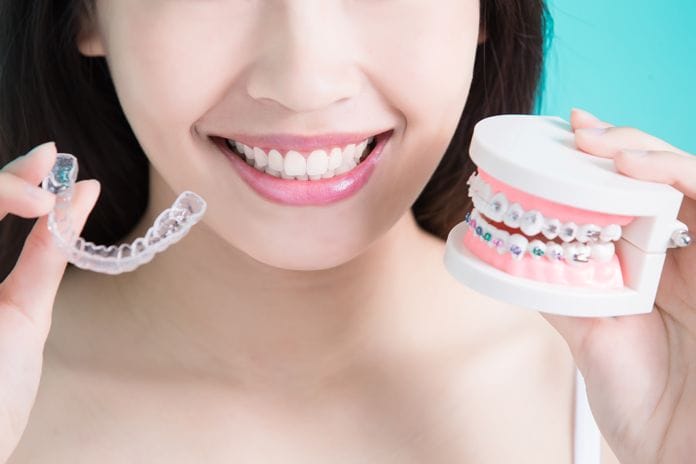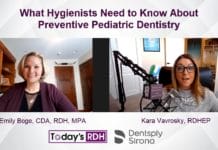Dear dental hygienists, I know it’s tough to perform a prophylaxis around braces. You know how hard it is for the patient to maintain cleanliness, living a dental life behind “bars.” We know for a fact that dentistry is advancing especially when clear aligners are available as an option for patients. Although this is not for us to decide whether patients get traditional braces or clear aligners, proper education on each type of treatment will help patients decide which treatment best suits their needs. Both traditional braces and clear aligners achieve similar results in moving teeth. However, each treatment option has its pros and cons.
Many of us in our adolescence have gone through the rite of passage we call “braces.” Traditional braces are the commonly known form of treatment for malocclusion and misaligned teeth. Since traditional braces achieve movement with brackets and wires, it does create barriers for patients to maintain optimal enamel and gingival health because of plaque build-up. As dental hygienists, we constantly educate our patients on daily plaque control. We know where plaque is being left behind and that it is placing the patient at risk of developing white spot lesions and gingivitis. Despite traditional braces having great results, the appearance of white spot lesions after wire and bracket removal can be disappointing. So, what can we do to prevent that?
It’s important to describe the role of plaque to patients for them to have a better understanding of what it can do when it’s left behind by improper brushing or lack of cleaning interdentally. Patients should be informed of all home care aides that will work best for them while in traditional braces. Ideally, creating a prevention plan for patients with traditional braces would be the most beneficial for patients to help keep gingiva and enamel healthy. Prevention plans can include recommending prophylaxis every 3-4 months, topical fluoride application, or prescribing a 5000ppm fluoride toothpaste to use daily.
Nearly 20 years ago, orthodontics advanced with clear aligners. While in clear aligners, patients can discreetly move forward with orthodontic treatment without the appearance of brackets and wires. This is a popular option for adults who seek to improve their smile and are an option for teen patients as well. In some cases, clear aligners are able to move like traditional braces by changing aligners every 7-14 days. However, without patient compliance and discipline, clear aligners may not be the best option. Dental hygienists have an opportunity in educating patients on clear aligners as well as what a patient can do to maintain their oral health while in clear aligners.
Home care for patients in clear aligners should be no different than patients who have traditional braces. They should be offered the same home care recommendations and prevention plan. Since clear aligners are removable, patients can eat and drink anything they’d like without worrying about food getting caught around brackets and wires. Patients must be instructed on how to keep their aligners clean based on the recommendations from the clear aligners’ manufacturer. Ensuring a patient is wearing aligners as directed in their treatment plan is imperative for successful treatment and great results.
Dental hygienists play an important role in orthodontics, especially when it comes to patient care. Whether the path of our patients is clear or behind “bars,” they alway02s need our support during their orthodontic treatment. As much as we all wish orthodontic treatment were an overnight success, our patients endure the process for a good amount of time. We need to celebrate the victories with patients no matter how big or small, such as recognizing improvement in oral hygiene as their teeth move into alignment or complimenting their smile at each visit.












